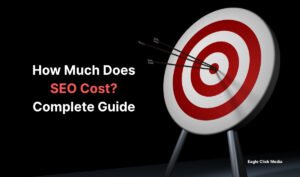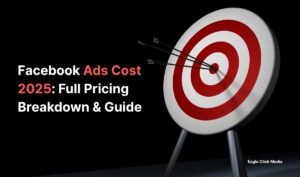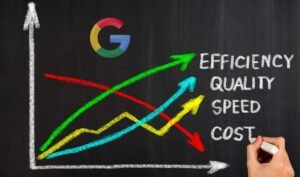Introduction
Search engines like Google are often the first place people go when they need a product or service. That’s why on-page SEO is one of the most important things you can do to improve your website’s visibility and bring in qualified traffic — especially if you’re targeting competitive markets like Canada.
Whether you’re a small business owner, a marketer, or a web designer, this guide will help you understand the essentials of on-page SEO, how it works, and how you can apply it to get better results.
What is On-Page SEO?

On-page SEO refers to the practice of optimizing individual pages of your website so they rank higher in search engine results and attract more relevant traffic. It includes everything from your content and keyword usage to how your pages are structured.
Unlike off-page SEO (like backlinks), on-page SEO is completely in your control.
Why it’s Important:
- Helps search engines understand your content
- Increases visibility for relevant searches
- Improves the user experience on your site
- Drives more organic traffic
Key Elements of On-Page SEO

1. Title Tags and Meta Descriptions
These are the first things users see on Google. Make sure they include your main keywords and encourage clicks.
Tips:
- Keep titles under 60 characters
- Use action words and unique value points
- Include geo keywords like “SEO company in Toronto” if targeting specific regions
2. Header Tags (H1, H2, H3)
Organize your content using headers. They help both users and search engines understand your page layout.
Best practice: Only one H1 per page (your main title), followed by H2s and H3s for subtopics.
3. Keyword Placement
Use relevant keywords naturally in your headings, paragraphs, image alt text, and meta descriptions.
Example Keywords:
- on-page SEO checklist
- how to improve SEO on website
- Canadian SEO expert
4. High-Quality Content
Content should be useful, easy to understand, and focused on solving the user’s problem.
Pro Tip: Google prefers content that shows Expertise, Experience, Authority, and Trust (E-E-A-T). Answer questions clearly, back claims with facts, and keep content fresh.
5. Image Optimization
Optimized images can improve site speed and help your pages appear in Google Images.
How to optimize:
- Use descriptive file names (e.g., seo-checklist-2025.jpg)
- Compress images to reduce file size
- Add alt text with relevant keywords
6. Internal Linking
Link to other pages on your website. It keeps users engaged and helps search engines crawl your site better.
Example: If you have a blog post on “How SEO helps small businesses in Canada,” link to it within your content.
7. Mobile-Friendliness
More than half of web traffic comes from mobile. Make sure your website is responsive and loads fast on all devices.
8. Page Speed Optimization
Google rewards fast websites. Use tools like Google PageSpeed Insights to analyze and fix speed issues.
SEO Best Practices to Follow in 2025

- Keep content updated and accurate
- Focus on user intent (what your audience is really searching for)
- Use schema markup for enhanced search results (like ratings, FAQs, etc.)
- Maintain a clean URL structure (e.g., www.yoursite.com/seo-tips)
- Avoid keyword stuffing and thin content
Tools You Can Use for SEO
- Google Search Console – Monitor performance and fix SEO issues
- Yoast SEO / RankMath – WordPress plugins for easy optimization
- Ahrefs / SEMrush – For keyword research and audits
- GTmetrix / PageSpeed Insights – For speed testing
FAQs
Q1: How long does it take for on-page SEO to work?
Usually, it takes 3–6 months to see noticeable improvements, but minor wins (like better click-through rates) can happen faster.
Q2: Can I do on-page SEO myself or should I hire an agency?
If you’re comfortable with website editing and content creation, you can start yourself. However, hiring an experienced SEO company in Canada like Eagle Click Media can fast-track your success and ensure everything is done properly.
Q3: What’s the difference between on-page and off-page SEO?
On-page SEO is everything you do on your website (content, tags, keywords). Off-page SEO refers to actions taken outside your site, like backlinks and social signals.
Conclusion
On-page SEO is the foundation of your website’s visibility. By optimizing your content, structure, and performance, you can climb the search rankings and attract more traffic from both local and global audiences.
Whether you’re a local business in Toronto or a growing e-commerce brand, following these on-page SEO best practices will help you stay ahead in 2025.
Need Expert Help? Contact Eagle Click Media
If you want professional help to improve your on-page SEO and drive real results, Eagle Click Media is here for you. We specialize in on-page SEO services, content optimization, and complete digital strategies tailored for your business. Explore our full range of services here.
👉 Let’s grow your traffic the smart way. Contact us now
SEO Keywords: on-page SEO, SEO for websites, SEO company in Canada, SEO checklist 2025, improve website rankings, best on-page SEO practices





